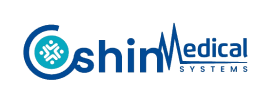The Guide to CT Scans: Advantages, Disadvantages, and FAQs

Computed tomography (CT) scans, often known as CAT scans, are a powerful medical imaging technology for revealing anatomical detail inside the human body. In this detailed tutorial, we’ll explore the benefits and drawbacks of CT scans, answering frequently asked concerns along the way.

Table of Contents
ToggleAdvantages of CT Scan :
High-Quality Imaging :
By providing high-resolution pictures of internal organs and tissues in addition to the bones, CT scans help in accurate diagnosis.
Speed and Efficiency :
Due to its speed and efficiency, CT scans are increasingly being used in urgent care settings.
Versatile Applications :
CT scans have many diagnostic applications, from detecting cancer to assessing blood flow to finding fractures.
3D Visualization :
To better understand the anatomy and help in surgical planning, modern CT scanners may provide 3D pictures.
Painless and Non-Invasive :
Most people have no problems with getting CT scans because they are painless and won’t disrupt their day.
Disadvantages of CT Scan :
Radiation Exposure :
Ionising radiation, such as that used in CT scans, has been linked to an increased risk of cancer, especially in cases of prolonged or excessive radiation exposure.
Contrast Material :
Contrast material is used in some CT scans, and it is possible for some people to have an adverse response to it or develop kidney issues as a result.
Limited Soft Tissue Differentiation :
However, CT scans may have trouble discriminating between some types of soft tissues, despite providing great imaging of bones and organs.
Cost and Accessibility :
Some people may not be able to afford CT scans, and access to them may be limited in their area.
Conclusion
In conclusion, understanding the pros and cons of CT scanning is crucial for making informed medical decisions. While CT scans offer rapid imaging and detailed cross-sectional views, they also come with drawbacks such as exposure to radiation and potential misinterpretations. When comparing CT scan vs. MRI, each modality has its unique benefits, with MRI providing better soft tissue contrast and no radiation. Additionally, the rise of tele radiology enhances accessibility to expert analysis, making it easier to utilize these imaging techniques effectively. By weighing these factors, patients and healthcare providers can choose the most appropriate imaging method for their specific needs.
Frequently Asked Questions (FAQ) :
1. What is a CT Scan?
Computed tomography (CT) scans are a type of medical imaging that employ X-rays to provide comprehensive pictures of the body’s interior components, facilitating accurate diagnosis and treatment.
2. How Does CT Scans Work?
The CT scanner spins around the patient, sending out X-rays from all sides. The data is processed by a computer, which then generates cross-sectional pictures that may be used to construct a three-dimensional model of the scanned region.
3. Are there alternatives to CT Scan?
Yes, Magnetic Resonance Imaging (MRI) and ultrasound are alternatives, each having its own benefits and best uses depending on the ailment being studied.
4. How long does a CT Scan take?
A CT scan can take anything from a few minutes to an hour or more, depending on the size of the region being examined.
5. Are there any preparation steps for a CT Scan?
Fasting, the removal of metal items, and the foregoing of certain drugs are all possible preparations. The hospital or clinic will provide you with detailed directions.
In order to make educated decisions about their medical imaging needs, patients should be aware of the benefits, drawbacks, and frequently asked questions associated with CT scans. For specific recommendations and instructions, it’s best to go to a doctor.
